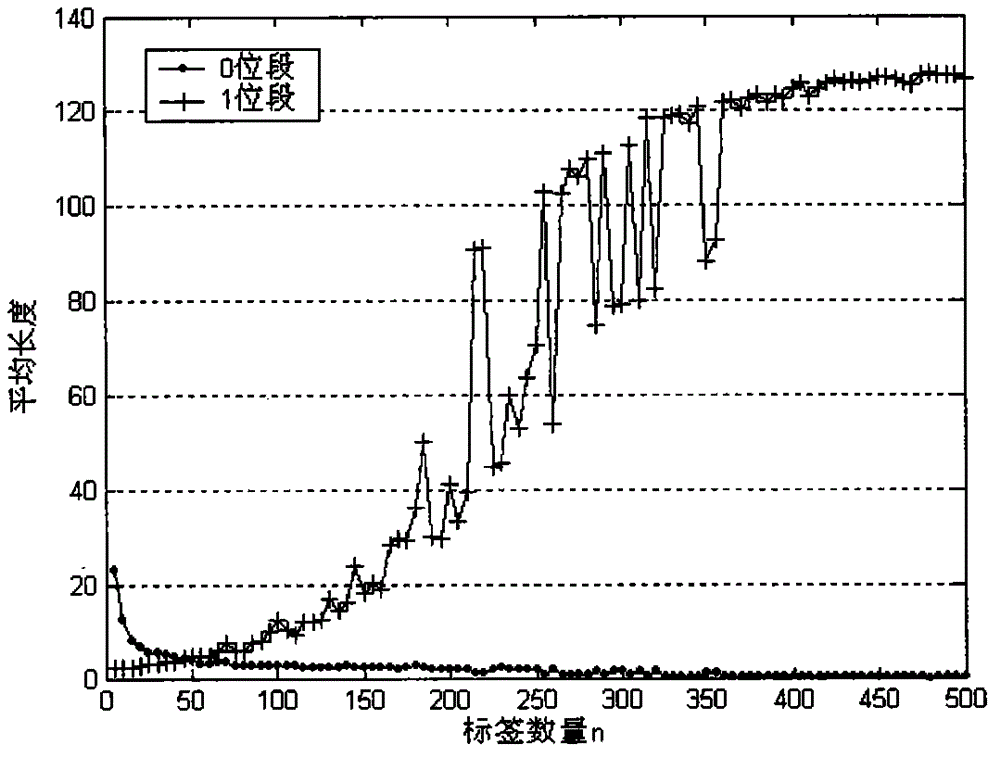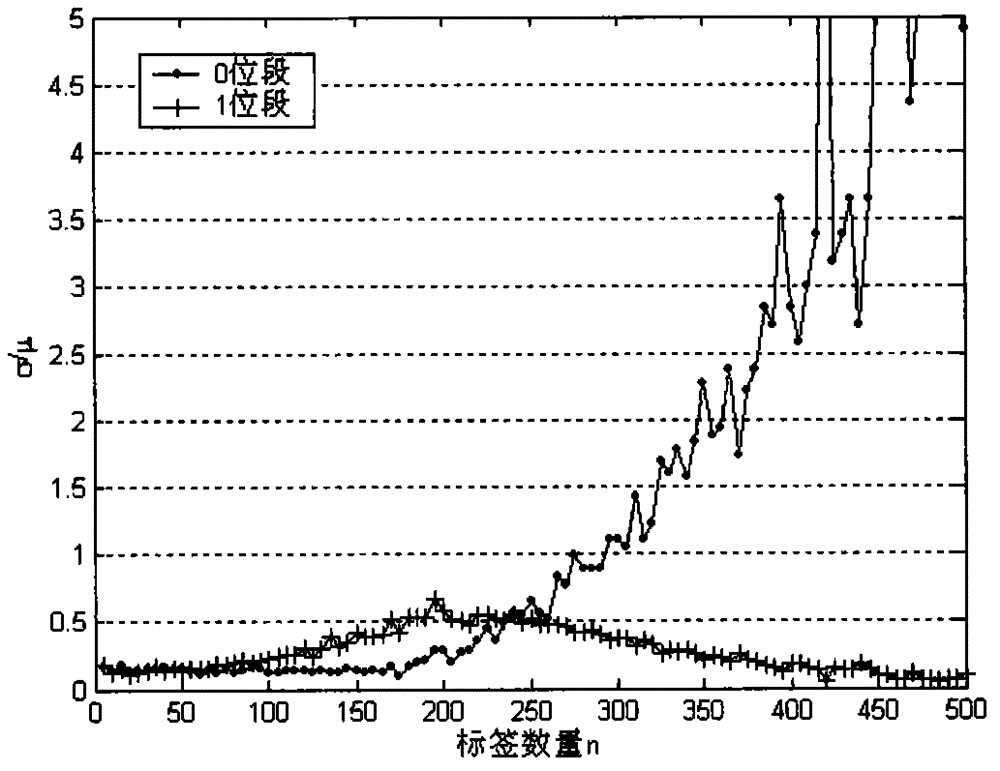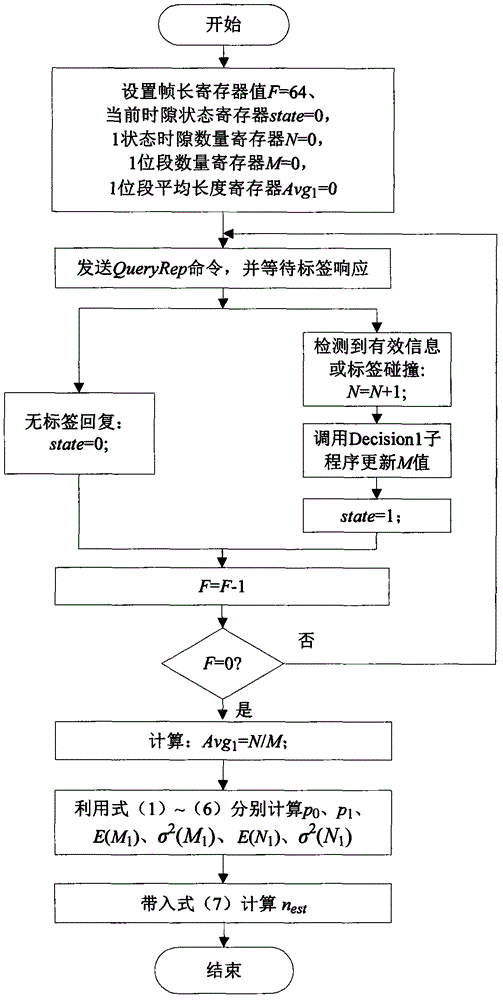Radio frequency identification label number estimating method capable of meeting EPC C1G2 standard and based on time slot states
A technology of EPCC1G2 and radio frequency identification tags, which is applied in the field of radio frequency identification tag quantity estimation based on time slot status, can solve the problems of low estimation accuracy and long estimation time of tag quantity, and achieve high estimation accuracy, short tag estimation time, Effects that are easy to implement
- Summary
- Abstract
- Description
- Claims
- Application Information
AI Technical Summary
Problems solved by technology
Method used
Image
Examples
Embodiment Construction
[0035] The present invention will be further described in detail below in conjunction with the accompanying drawings and specific embodiments.
[0036] Assume that a certain area is uniquely covered by an RFID reader, and there are n tags around it.
[0037] (1) First, the reader broadcasts the frame length F and a randomly generated 16-bit binary number RN16 to the tag by calling the R command. After receiving the command, the tag uses F, RN16 and its own ID as parameters to call The random function in generates self-slots F of labels i , Fi ∈[1,F], and save it in the label slot register. Next, the reader starts to identify the current frame, and sends the L command to broadcast the time slot polling signal to the tag. After receiving the command, the tag will decrement the value in the tag time slot register by 1, if and only if the value is 0 The tag is allowed to respond to the reader in the current time slot, the response signal is a newly generated 16-bit random binary...
PUM
 Login to View More
Login to View More Abstract
Description
Claims
Application Information
 Login to View More
Login to View More - R&D
- Intellectual Property
- Life Sciences
- Materials
- Tech Scout
- Unparalleled Data Quality
- Higher Quality Content
- 60% Fewer Hallucinations
Browse by: Latest US Patents, China's latest patents, Technical Efficacy Thesaurus, Application Domain, Technology Topic, Popular Technical Reports.
© 2025 PatSnap. All rights reserved.Legal|Privacy policy|Modern Slavery Act Transparency Statement|Sitemap|About US| Contact US: help@patsnap.com



